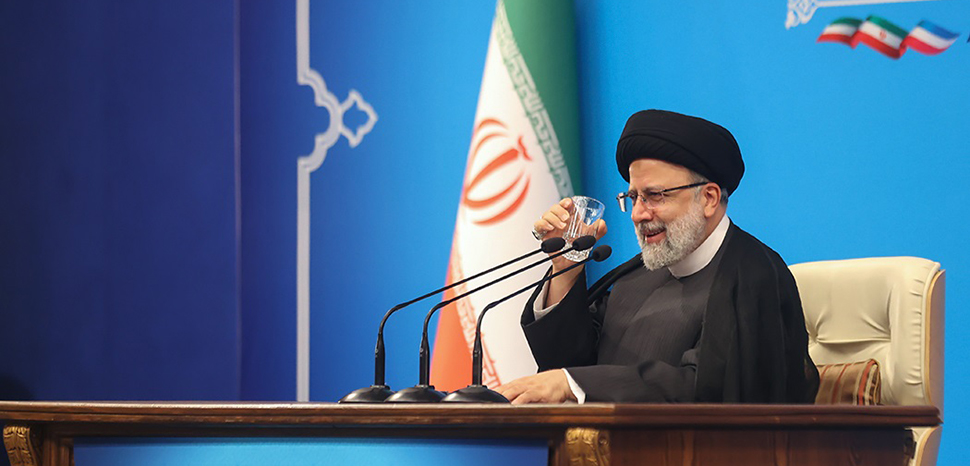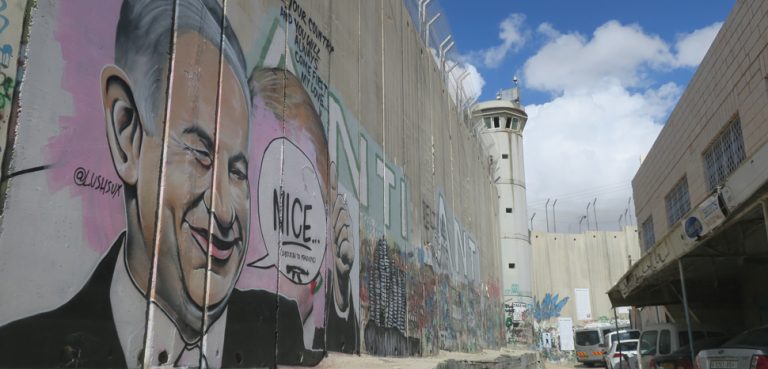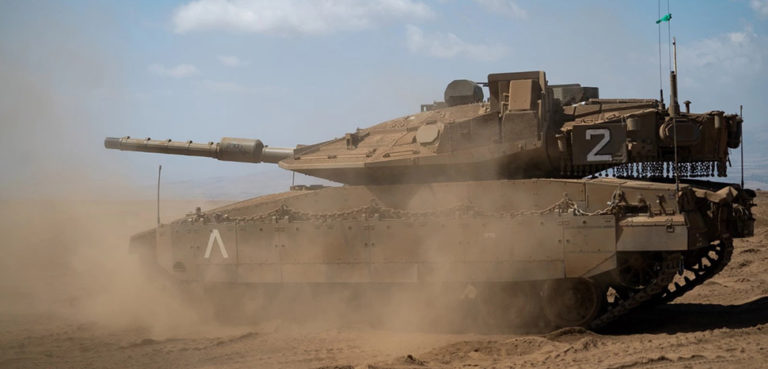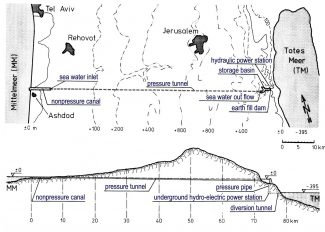Since the attacks initiated by Hamas on Israel on October 7 and Israel’s ongoing retaliatory counteroffensive, the situation in the region has been getting worse at an unprecedented rate. Although the armed conflict between Israel and Palestine has been a source of worry for decades, the Iran-backed Hamas attacks did absolutely nothing for the Gaza civilians or the Palestinian cause as a whole in terms of bringing about any potential reconciliation and achieving any peace in the short term.
Given that it funds and trains Hamas, it is very likely that Iran knew about Hamas’ plans in advance. At the same time, the Kingdom of Saudi Arabia (KSA) was close to reaching a normalization agreement with Israel under United States (US) sponsorship. Such an agreement was highly likely to include the possibility of a KSA civilian nuclear program, further strengthening US-KSA defense cooperation, and the possibility of a peace deal between the Israelis and Palestinians under Saudi influence.
Furthermore, almost a month before the Hamas attacks, a plan for creating the India-Middle East-Europe Corridor (IMEC) was announced during the G20 summit in New Delhi. The IMEC, which is envisioned as a regionally strategic connectivity project, primarily includes India, the United Arab Emirates (UAE), the KSA, Jordan, and Israel. Given the macro-scale of the project and its impact on trade flow between India and Europe, it was expected that the project would bring about an unprecedented level of integration and strategic cooperation on multiple fronts between the nations involved, which would in turn contribute to a more peaceful, stable, safer, and rapidly developing Middle East. All the previously mentioned undoubtedly go against Iran’s longstanding regional ambitions and destabilizing agenda toward many of the Arab states.
Mounting geopolitical tensions in the region over the ongoing war in Gaza are leading to an inflamed public sentiment in many of the Arab nations, thus putting pressure on regional governments with regard to not moving forward on any tangible steps toward normalization or greater economic cooperation with Israel, which is precisely one of the main objectives of Iran. Since Iran clearly has already failed Hamas in its conflict with Israel, any bet on Iran’s position toward the war in Gaza is obviously irrelevant now. This further implies that the regional and global threat from Iran is far more than just igniting a confrontation between Hamas and Israel. By using the conflict as a diversionary tactic that fans the flames of conflict and instability in the region, Iran seeks to divert attention from its own economic hardships, socio-political challenges, regional ambitions, and nuclear program development. The strategy may also serve to distract its population and allow Iran to rally nationalist sentiments and project itself as a champion of the oppressed, which further advances its regional agenda.
The chaos and international attention drawn to the conflict in Gaza provide Iran with an opportunity to divert global scrutiny away from its nuclear development activities. By intensifying its engagement in regional conflicts and capitalizing on the attention surrounding the war in Gaza, Iran could be attempting to cloak its nuclear advancements. Iran has faced criticism and sanctions over the years due to concerns surrounding its nuclear program. By leveraging the conflict and the diverted world attention, Iran continues to make progress on its nuclear ambitions without the same level of outside observation and external interference. This also appears to be in line with Iran’s recent statement that reviving a nuclear deal with the West is becoming increasingly impractical. In addition to having stockpiles that are almost 22 times more than the limit set by the collapsed 2015 nuclear agreement, Iran is also believed to have enriched uranium up to a 60% threshold level and can be close to the weapons-grade threshold level at any moment. Furthermore, the history of negotiations shows that Iran always adheres to diplomatic maneuvers that allow it, at the end of the day, to reach its intended target in nuclear program; thus, the ongoing war in Gaza can presumably be utilized by Iran to enhance its diplomatic leverage among nations engaged in efforts to mediate the crisis. By attempting to present itself as a crucial regional power with pivotal influence through its control of proxy groups in the Middle East, Iran can utilize negotiations and international diplomacy to potentially negotiate leniency or reduced scrutiny regarding its own nuclear program.
Iran has a well-established history of employing proxy warfare, whereby it supports non-state actors in Iraq, Syria, Lebanon, Yemen, and Gaza. The ongoing war in Gaza presents an opportunity for Iran to strengthen and solidify its relationship and alliances further across the Middle East. By providing financial, material, and technological support, Iran can boost the capabilities of these groups, enabling them to intensify their fight against the US and its regional Arab partners. This can potentially lead to prolonged conflict and greater regional instability, which has always been among the main objectives of Iran. In addition, even if that is not the actual case for the groups, the conflict in Gaza also presents the opportunity for Iran to garner support from like-minded actors within the region, potentially expanding its network of allies who can aid in the pursuit of terrorist insurgency objectives.
For Iran, destabilizing the region and creating a favorable environment for insurgency have been long-standing goals. By exploiting the present geopolitical tensions, Iran will aim to destabilize neighboring countries, particularly those deemed hostile to its interests, including different Arab states. By utilizing prolonged conflicts and tensions, Iran can attempt to undermine the stability of neighboring Arab states, including but not limited to Iraq, Syria, and Yemen. This instability creates an environment conducive to the spread of Iran’s radical ideologies, perpetuating terrorism within the region.
Such a pattern has recently become clear in Yemen, where the Houthis, who receive support from Iran, have increased their attacks on commercial ships over the past few weeks, including one that resulted in a missile strike against a Norwegian tanker. Additionally, since October 7th, the Houthis have launched drones and missiles at Israel and commercial ships, most which US forces intercepted in the Red Sea. Even though the current attacks by the Houthis do not come as a surprise, they place an emphasis on a wider aspect, and that is that the armed capabilities possessed by the Houthis do pose an undeniable and critical threat to the safety of different Gulf Cooperation Council (GCC) countries as well as maritime security. Should regional tensions further escalate, the Houthi armed capabilities, under Iran’s influence, can be directed at different Arab states that are perceived by Iran as US regional partners. Such a scenario is not unrealistic given that, in a practical sense, Iran is not capable of directly confronting the US or Israel militarily and thus has to resort to its proxy groups in launching attacks on US interests in the region and its regional Arab partners. Especially with Iran-backed groups in Iraq, Syria, Lebanon, and Yemen, the region is dubbed the “axis of resistance.”
On another front, the threat from the rise of insurgencies and extremist’ groups in Iraq and Syria remains a critical and long-lasting matter of concern, as well as an opportunity for Iran to further enhance its support for such groups in light of the ongoing conflict in Gaza. Both countries are very well known to have a strong presence of Iran-backed factions. Since the start of the conflict in Gaza, US bases in Syria and Iraq have been attacked by Iran-backed groups more than 90 times, including a rocket attack on the US embassy in Baghdad. Such attacks draw attention to the inability of state forces in Iraq and Syria to prevent and contain insurgencies, thus further highlighting the risk of Iraq and Syria sliding once more into civil unrest, which, in turn, would allow Iran to further strengthen its proxy groups in the area.
In addition, the ongoing conflict in Gaza creates a fertile breeding ground for empowering radical elements that advocate for violence to achieve their goals. Consequently, disenchanted individuals may be susceptible to recruitment by insurgent and terrorist organizations seeking to exploit their frustrations.
Thwarting Iran’s indirect exploitation of the situation via its proxy groups in the Middle East remains of utmost importance. Fostering unity among regional Arab allies, who should view the threat from Iran as a common adversary, is crucial. By adopting a united front, the US and regional Arab partners can present a stronger, more unified opposition to Iran, thereby diminishing its influence and anticipated aggressive behavior. Cooperation in defense capability development, interoperability, joint military exercises, and increased diplomatic engagement can enhance collective deterrence capability against Iran’s ongoing interference. However, given Iran’s history of proxy warfare and terrorism support, the US and regional Arab allies must place emphasis on working together to strengthen their counterterrorism and counterinsurgency capacities. Coordinated efforts can focus on intelligence sharing, border control, and coordinated military operations targeting Iran-backed proxies. By disrupting Iran’s ability to support and supply such groups, the US and regional Arab allies can undermine Iran’s influence in the Middle East.
Finally, although the situation in Gaza is highly important for the international community given the conflict risks numerous spill-over effects, it is also critical for the international community to remain vigilant and ensure that diplomatic and strategic efforts are made to prevent Iran from using regional conflicts as a smokescreen to advance their nuclear ambitions. Strengthening monitoring mechanisms, military deterrence capabilities, and implementing robust diplomatic measures should be prioritized to maintain peace, stability, and non-proliferation in Iran.
Finally, an immediate and coordinated response is necessary to combat the growing threat that the Houthi attacks on commercial vessels in the Red Sea and the Gulf of Aden pose. With the Houthis recent attacks, the militant group is proving itself to be an imminent threat and a strong arm for Iran, which can be utilized at any moment to inflict harm to maritime security as well as to the GCC strategic interests given the huge number of oil tankers and mass volumes of oil that pass through the region.
The same threat has also been present in the Strait of Hormuz; however, this one emanates directly from Iran, which makes it relatively unlikely to produce direct military confrontation at sea, at least at this stage. Countering Houthi attacks on vessels requires a comprehensive and collaborative approach. By strengthening intelligence sharing, establishing a multinational maritime task force, implementing anti-missile and anti-drone systems, boosting regional naval patrols, strengthening special operations forces and counter-terrorism capabilities, and enhancing regional cooperation, the US and GCC can effectively enhance their joint military capabilities to counter the Houthi threat as it emerges. This integrated approach will help secure vital shipping routes and contribute to stability in the region.
The views expressed in this article belong to the authors alone and do not necessarily reflect those of Geopoliticalmonitor.com.




